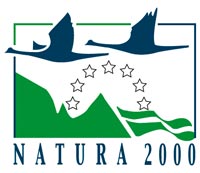Life Project on Carrowbehy / Caher Bog

The Living Bog undertook a large amount of detailed survey work on this site prior to the commencement of restoration works. The positions of dams and the movement of water on the bog was carefully assessed before man and machine combined to restore the bog.
Between November 2019 and March 2020 we installed almost 1,100 dams across the bog, keeping water on the bog and locking precious carbon deep within its peaty soils. Rare flora and fauna has returned to the site and a remarkable restoration has occurred.
We have seen a large increase in the area of active raised bog here. Full details will be revealed in late 2021.
Previous to us, restoration works took place at the site prior to 2005, including the blocking of several high bog drains. There was a slight increases in the area of Active Raised Bog as a result of drain blockage. Sub-marginal ecotope has expanded at the expense of marginal in the vicinity of a blocked drain complex probably as a direct result of the restoration works. In 2010, National Parks and Wildlife Service felled waste a conifer plantation on the high bog in the northern section of the site.
The current conservation objective for Carrowbehy / Caher Bog is to restore the area of Active Raised Bog to the area present when the Habitats Directive came into force in 1994.
In the case of Active Raised Bog, the objective also includes the restoration of Degraded Raised Bog.
The Area objective for Active Raised Bog is 94.70ha (comprising 87.66ha on high bog and 7.04ha on cutover).
The objective in relation to Structure and Functions (S&Fs) is that at least half of the Active Raised Bog area should be made up of the central ecotope and active flush (i.e. the wetter vegetation communities).
These values have been set as Favourable Reference Values. Degraded Raised Bog still capable of regeneration should be, according to the interpretation manual, capable of regeneration to ‘active raised bog’ in 30 years if appropriate measures are put in place (i.e. no major impacting activities are present and any necessary restoration works are implemented).
In the past the habitat area was considered to be all high bog not considered to be active, but this is now not accepted as much of the high bog can no longer be restored to active (DAHG 2014). The remaining non-active high bog is considered supporting habitat for the Annex I habitats on the high bog. This supporting habitat is an essential part of the hydrological unit necessary to support Active and Degraded Raised Bog habitats.
The restoration of suitable cutover areas is essential for Active Raised Bog to achieve the favourable conservation condition at the site. Nevertheless it is acknowledged that a long period of time (i.e. over 30 years) may be needed after appropriate restoration works are undertaken on the cutover areas for the habitat to develop.
Restoration works along the western cutover of one of our other project sites, Killyconny Bog SAC on the Cavan/Meath Border indicate the occurrence of pioneer ‘active raised bog’ vegetation 8 years after these were undertaken.
Based on the close ecological relationship between Active Raised Bog, Degraded Raised Bog and Rhynchosporion depressions, it is considered that should favourable conservation condition for ‘Active Raised Bog’ be achieved on the site, then, as a consequence, favourable conservation condition for the other two habitats would also be achieved.
There has been a slight decrease in the area of Active Raised Bog (3.02 ha) at Carrowbehy in the 2005 to 2012 period. This has occurred due to the loss of all or part of four areas of former sub-central ecotope. Two of the areas were located relatively near the high bog edge, whereas the other two were located on some of the highest parts of the bog. In addition, some central ecotope has degraded to sub-central quality. Some new peat forming areas have been described at the site, which are the result of a more comprehensive field mapping rather than actual changes. The boundaries of other peat forming areas have been changed also as a result of more comprehensive field mapping.
Peat cutting no longer takes place at the site. Drainage and afforestation on cutover to the southwest are likely to be the most threatening current activities at the site. 1.2km of drains remain functional and 6.2 km are reduced functional. In addition to drains on the high bog, drainage on the periphery,
including old cutover drains as well as recently maintained agriculture and forestry drains near the high bog, are likely to negatively impact on bog hydrology and contribute to losses in Active Raised Bog.
In the 2012 survey, high bog drainage blocking is reported as a positive management action under Restoring/Improving the hydrological regime and forestry clearance is also reported as positive. This already demonstrated potential for increase in the marea of Active Raised Bog will be built on during the LIFE project.



